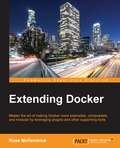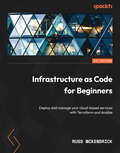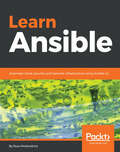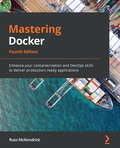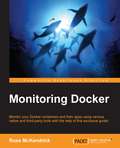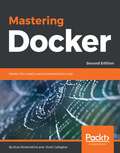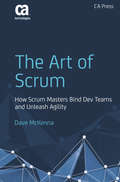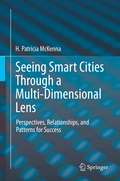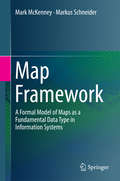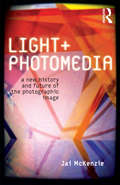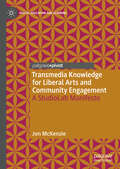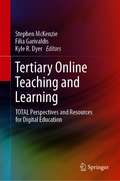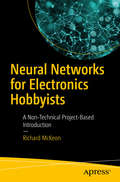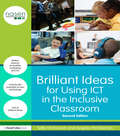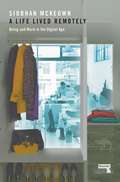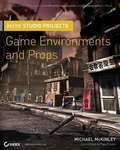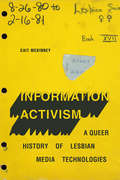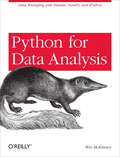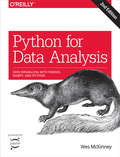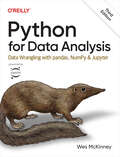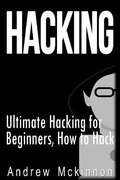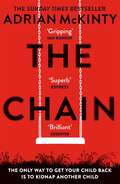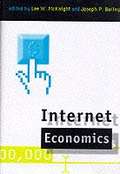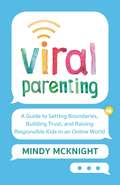- Table View
- List View
Extending Docker
by Russ MckendrickMaster the art of making Docker more extensible, composable, and modular by leveraging plugins and other supporting tools About This Book * Get the first book on the market that shows you how to extend the capabilities of Docker using plugins and third-party tools * Master the skills of creating various plugins and integrating great tools in order to enhance the functionalities of Docker * A practical and learning guide that ensures your investment in Docker becomes more valuable Who This Book Is For This book is for developers and sys admins who are well versed Docker and have knowledge on basic programming languages. If you can't wait to extend Docker and customize it to meet your requirements, this is the book for you! What You Will Learn * Find out about Docker plugins and the problems they solve * Gain insights into creating your own plugin * Use Docker tools to extend the basic functionality of the core Docker engine * Get to grips with the installation and configuration of third-party tools available to use with Docker plugins * Install, configure, and use a scheduling service to manage the containers in your environment * Enhance your day-to-day Docker usage through security, troubleshooting, and best practices In Detail With Docker, it is possible to get a lot of apps running on the same old servers, making it very easy to package and ship programs. The ability to extend Docker using plugins and load third-party plugins is incredible, and organizations can massively benefit from it. In this book, you will read about what first and third party tools are available to extend the functionality of your existing Docker installation and how to approach your next Docker infrastructure deployment. We will show you how to work with Docker plugins, install it, and cover its lifecycle. We also cover network and volume plugins, and you will find out how to build your own plugin. You'll discover how to integrate it with Puppet, Ansible, Jenkins, Flocker, Rancher, Packer, and more with third-party plugins. Then, you'll see how to use Schedulers such as Kubernetes and Amazon ECS. Finally, we'll delve into security, troubleshooting, and best practices when extending Docker. By the end of this book, you will learn how to extend Docker and customize it based on your business requirements with the help of various tools and plugins. Style and approach An easy to follow guide with plenty of hands-on practical examples which can be executed both on your local machine or externally hosted services.
Infrastructure as Code for Beginners: Deploy and manage your cloud-based services with Terraform and Ansible
by Russ McKendrickMaster Infrastructure as Code (IaC) and streamline your DevOps workflows using Terraform and AnsiblePurchase of the print or Kindle book includes a free eBook in the PDF formatKey FeaturesEmploy effective strategies and approach IaC projects efficiently by diving deep into its fundamentalsUnderstand the working of Terraform and Ansible and integrate them into your CI/CD workflowsWork with real-world examples of IaC across multiple cloud providers (Azure & AWS)Book DescriptionThe Infrastructure as Code (IaC) approach ensures consistent and repeatable deployment of cloud-based IaaS/PaaS services, saving you time while delivering impeccable results. Infrastructure as Code for Beginners is a practical implementation guide that helps you gain a clear understanding of the foundations of Infrastructure as Code and make informed decisions when implementing it. With this book, you'll uncover essential IaC concepts, including planning, selecting, and implementing the right tools for your project. With step-by-step explanations and real-world examples, you'll gain a solid understanding of the benefits of IaC and the scope of application in your projects. You'll learn about the pros, cons, and best practices of different IaC tools such as Terraform and Ansible, and their use at different stages of the deployment process along with GitHub Actions. Using these tools, you'll be able to design, deploy, and secure your infrastructure on two major cloud platforms, Microsoft Azure and Amazon Web Services. In addition, you'll explore other IaC tools such as Pulumi, AWS CloudFormation, and Azure Bicep. By the end of this book, you'll be well equipped to approach your IaC projects confidently.What you will learnDetermine the right time to implement Infrastructure as Code for your workloadSelect the appropriate approach for Infrastructure-as-Code deploymentGet hands-on experience with Ansible and Terraform and understand their use casesPlan and deploy a workload to Azure and AWS clouds using Infrastructure as CodeLeverage CI/CD in the cloud to deploy your infrastructure using your codeDiscover troubleshooting tips and tricks to avoid pitfalls during deploymentWho this book is forThis book is for cloud engineers, software developers, or system administrators responsible for deploying resources to host applications. Ideal for both beginners and experienced professionals seeking to deepen their knowledge. Experience in manually deploying resources for applications in public clouds such as AWS or Microsoft Azure is a must. A basic understanding of programming or scripting languages, such as Python, Bash, PowerShell, etc. as well as familiarity with version control systems like Git, is a prerequisite.
Learn Ansible: Automate cloud, security, and network infrastructure using Ansible 2.x
by Russ McKendrickRun Ansible playbooks to launch complex multi-tier applications hosted in public cloudsKey FeaturesBuild your learning curve using AnsibleAutomate cloud, network, and security infrastructures with easeGain hands-on exposure on AnsibleBook DescriptionAnsible has grown from a small, open source orchestration tool to a full-blown orchestration and configuration management tool owned by Red Hat. Its powerful core modules cover a wide range of infrastructures, including on-premises systems and public clouds, operating systems, devices, and services—meaning it can be used to manage pretty much your entire end-to-end environment. Trends and surveys say that Ansible is the first choice of tool among system administrators as it is so easy to use.This end-to-end, practical guide will take you on a learning curve from beginner to pro. You'll start by installing and configuring the Ansible to perform various automation tasks. Then, we'll dive deep into the various facets of infrastructure, such as cloud, compute and network infrastructure along with security.By the end of this book, you'll have an end-to-end understanding of Ansible and how you can apply it to your own environments.What you will learnWrite your own playbooks to configure servers running CentOS, Ubuntu, and WindowsIdentify repeatable tasks and write playbooks to automate themDefine a highly available public cloud infrastructure in code, making it easy to distribute your infrastructure configurationDeploy and configure Ansible Tower and Ansible AWXLearn to use community contributed rolesUse Ansible in your day-to-day role and projectsWho this book is forLearn Ansible is perfect for system administrators and developers who want to take their current workflows and transform them into repeatable playbooks using Ansible. No prior knowledge of Ansible is required.
Mastering Docker: Enhance your containerization and DevOps skills to deliver production-ready applications, 4th Edition
by Russ McKendrickUnlock the full potential of the Docker containerization platform with this practical guideKey FeaturesExplore tools such as Docker Engine, Machine, Compose, and SwarmDiscover how you can integrate Docker into your everyday workflowsGet well-versed with Kubernetes options such as Minikube, Kind, and MicroK8sBook DescriptionDocker has been a game changer when it comes to how modern applications are deployed and created. It has now grown into a key driver of innovation beyond system administration, with a significant impact on the world of web development. Mastering Docker shows you how you can ensure that you're keeping up with the innovations it's driving and be sure you're using it to its full potential. This fourth edition not only demonstrates how to use Docker more effectively but also helps you rethink and reimagine what you can achieve with it.You'll start by building, managing, and storing images along with exploring best practices for working with Docker confidently. Once you've got to grips with Docker security, the book covers essential concepts for extending and integrating Docker in new and innovative ways. You'll also learn how to take control of your containers efficiently using Docker Compose, Docker Swarm, and Kubernetes.By the end of this Docker book, you'll have a broad yet detailed sense of what's possible with Docker and how seamlessly it fits in with a range of other platforms and tools.What you will learnGet to grips with essential Docker components and conceptsDiscover the best ways to build, store, and distribute container imagesUnderstand how Docker can fit into your development workflowSecure your containers and files with Docker's security featuresExplore first-party and third-party cluster tools and pluginsLaunch and manage your Kubernetes clusters in major public cloudsWho this book is forIf you are a software architect, DevOps engineer, sysadmin, or IT professional looking to leverage Docker's extensive features for innovating any process from system administration to web development, Mastering Docker will show you how you can use it to its full potential. A basic understanding of containerization and prior Docker experience is necessary.
Monitoring Docker
by Russ MckendrickMonitor your Docker containers and their apps using various native and third-party tools with the help of this exclusive guide!About This BookGet the only book that covers multiple methods to monitoring Docker Containers -your one-stop solution to all your Docker monitoring needsLearn how to implement third-party tools such as Datalog, cAdvisor, and more with this example-rich, hands-on guideLearn how to efficiently monitor Docker containers and get an edge over other administrators while maintaining apps on these containersWho This Book Is ForThis book is for DevOps engineers and system administrators who manage Docker containers and want to better manage these containers using expert techniques and methods and better maintain applications built on Docker.What You Will LearnDiscover the tools built into Docker to gain an insight into your containers' performanceAugment Docker's built-in tools with modern tools such as cAdvisor from Google, SysDig by Draios, and Soundcloud's PrometheusIntegrate the monitoring of your containers with more traditional monitoring solutions such as ZabbixTake advantage of the various SaaS offerings from third parties to move monitoring away from your local infrastructure and into the cloudDiscover the various ways to ship your applications' logs from the container to a central logging serviceGet the most out of your application and resources with the right implementation of your monitoring methodIn DetailThis book will show you how monitoring containers and keeping a keen eye on the working of applications helps improve the overall performance of the applications that run on Docker. With the increased adoption of Docker containers, the need to monitor which containers are running, what resources they are consuming, and how these factors affect the overall performance of the system has become the need of the moment.This book covers monitoring containers using Docker's native monitoring functions, various plugins, as well as third-party tools that help in monitoring. Well start with how to obtain detailed stats for active containers, resources consumed, and container behavior. We also show you how to use these stats to improve the overall performance of the system. Next, you will learn how to use SysDig to both view your containers performance metrics in real time and record sessions to query later. By the end of this book, you will have a complete knowledge of how to implement monitoring for your containerized applications and make the most of the metrics you are collectingStyle and approachThis is an easy-to-follow guide with plenty of hands-on examples that can be executed both on your local machine and externally hosted services.
Mastering Docker - Second Edition: Unlock New Opportunities Using Docker's Most Advanced Features, 3rd Edition
by Russ Mckendrick Scott GallagherUnlock new opportunities using Docker's most advanced features. About This Book • Experience first- and third-party tools such as Docker Compose, Docker Machine, Portainer, and Rancher • Learn how to leverage Kubernetes, Amazon ECS, and Docker Swarm and know when each solution is appropriate • Discover how Docker can be integrated into your daily workflows Who This Book Is For If you are an I.T Professional and recognize Docker's importance for innovation in everything from system administration to web development, but aren't sure how to use it to its full potential, this book is for you. What You Will Learn • Become fluent in the basic components and concepts of Docker • Secure your containers and files with Docker's security features • Extend Docker and solve architectural problems using first- and third-party orchestration tools, service discovery, and plugins • Leverage the Linux container virtualization paradigm by creating highly scalable applications In Detail Docker has been a game-changer when it comes to how modern applications are deployed and architectured. It has now grown into a key driver of innovation beyond system administration, with an impact on the world of web development and more. But how can you make sure you're keeping up with the innovations it's driving This book shows you how; it not only demonstrates how to use Docker more effectively, it also helps you rethink and reimagine what's possible with Docker. You will also cover basic topics such as building, managing and storing images along with best practices to make you confident before delving more deeply into Docker security. You'll find everything related to extending and integrating Docker in new and innovative ways. Docker Swarm and Docker Compose will help you take control of your containers in an efficient way. By the end of the book, you will have a broad and detailed sense of exactly what's possible with Docker and how seamlessly it fits in with a range of other platforms and tools. Style and approach A clear, concise, and straightforward book to make you a Master in Docker by including topics such as extending and integrating Docker along with different Docker tools, in a way that's accessible and practical. This book has been created to help you put new ideas into practice, and to demonstrate precisely what's possible with Docker.
The Art of Scrum
by Dave MckennaLearn the nuts and bolts of scrum--its framework, roles, team structures, ceremonies, and artifacts--from the scrum master's perspective. The Art of Scrum details the scum master's responsibilities and core functions in planning and facilitating the ceremonies and artifacts of a scrum team: sprint planning, sprint execution, backlog refinement, daily standups, sprint reviews, and sprint retrospectives. It analyzes the scrum master's interactions with other scrum roles, including the product owner, development team members, other scrum masters, and the agile coach. Scrum Master Dave McKenna catalogs the three skill sets that you must master to be successful at binding teams and unleashing agility: soft skills, technical skills, and contingency skills. You'll benefit from the author's examination of these skill sets with insights and anecdotes drawn from his own experience as an engineer, agile coach, and scrum master. He illustrates common mistakes scrum masters make, as well as modeling successful strategies, adaptations to changes, and solutions to tricky problems. What You'll Learn: How scrum masters facilitate the agile ceremonies How scrum masters align scrum teams to sprint goals and shield them from interference How scrum masters coach product owners to build a backlog and refine user stories How scrum masters manage contingencies such as intra-team conflicts, organizational impediments, technical debt, emergent architecture, personnel changes, scope creep, and learning from failure. Who This Book Is For: The primary readership is scrum masters, product owners, and dev team members. The secondary readership is scrum stakeholders, including executive sponsors, project managers, functional and line managers, administrative personnel, expert consultants, testers, vendors, and end users. The tertiary readership is anybody who wants to know how build an agile team that consistently delivers value and continuous improvement.
Seeing Smart Cities Through a Multi-Dimensional Lens: Perspectives, Relationships, and Patterns for Success
by H. Patricia McKennaThis book provides an interdisciplinary lens for exploring, assessing, and coming to new understandings of smart cities and regions, focusing on the six dimensions of sensing, awareness, learning, openness, innovation, and disruption. Using a hybrid case study and correlational approach, people from diverse sectors in a variety of small to medium to large-sized cities in multiple countries (e.g., Canada, United States, Ireland, Greece, Israel, etc.) provide experience-based perspectives on smart cities together with assessments for elements pertaining to each of the six dimensions.The analysis of findings in this work surfaces a rich and interwoven tapestry of patterns from the qualitative data highlighting for example, the importance of emotion/affect, privacy, trust, and data visualizations in influencing and informing the directions of smart cities and regions going forward. Correlational analysis of quantitative data reveals the presence and strength of emerging relationships among elements assessed, shedding light on factors that may serve as starting points for understanding what is contributing to potentials for improving success in smart cities and regions.
Map Framework
by Mark Mckenney Markus SchneiderThis book explores the concept of a map as a fundamental data type. It defines maps at three levels. The first is an abstract level, in which mathematic concepts are leveraged to precisely explain maps and operational semantics. The second is at a discrete level, in which graph theory is used to create a data model with the goal of implementation in computer systems. Finally, maps are examined at an implementation level, in which the authors discuss the implementation of a fundamental map data type in database systems. The map data type presented in this book creates new mechanisms for the storage, analysis, and computation of map data objects in any field that represents data in a map form. The authors develop a model that includes a map data type capable of representing thematic and geometric attributes in a single data object. The book provides a complete example of mathematically defining a data type, ensuring closure properties of those operations, and then translating that type into a state that is suited for implementation in a particular context. The book is designed for researchers and professionals working in geography or computer science in a range of fields including navigation, reasoning, robotics, geospatial analysis, data management, and information retrieval.
Light and Photomedia: A New History and Future of the Photographic Image (International Library Of Visual Culture Ser.)
by Jai McKenzieLight and Photomedia proposes that, regardless of technological change, the history and future of photomedia is essentially connected to light. It is a fundamental property of photomedia, binding with space and time to form and inform new, explicitly light-based structures and experiences. Jai McKenzie identifies light-space-time structures throughout the history of photomedia, from the early image machines through analogue and digital image machines to the present day. She proposes that they will continue to develop in the future and takes us to future image machines of the year 2039. With the use of the theories of Paul Virilio, Jean Baudrillard and Vilem Flusser, featuring artists including Henri Cartier-Bresson, Nam June Paik, Yves Klein, Eadweard Muybridge, Martha Rosler, Cindy Sherman and Michael Snow, as well as their photographic images, Light and Photomedia places the reader in a new history and future which, although mostly overlooked by the canon of photomedia theory, is an essential line of enquiry for contemporary thinking and dialogue in photography.
Transmedia Knowledge for Liberal Arts and Community Engagement: A StudioLab Manifesto (Digital Education and Learning)
by Jon McKenzieThis book sets forth a pedagogy for renewing the liberal arts by combining critical thinking, media activism, and design thinking. Using the StudioLab approach, the author seeks to democratize the social and technical practices of digital culture just as nineteenth century education sought to democratize literacy. This production of transmedia knowledge—from texts and videos to comics and installations—moves students between seminar, studio, lab, and field activities. The book also wrestles with the figure of Plato and the very medium of knowledge to re-envision higher education in contemporary societies, issuing a call for community engagement as a form of collective thought-action.
Tertiary Online Teaching and Learning: TOTAL Perspectives and Resources for Digital Education
by Stephen McKenzie Filia Garivaldis Kyle R. DyerThis book is the first comprehensive and integrated guide to online education. It systematically presents all aspects of the emerging “big picture” of online education, providing a broad range of information and insights from online experts, learners, teachers, developers and researchers.The book introduces readers to online education and reveals its potential for bringing about a paradigm shift in education. It describes avenues for increasing the value of the online education medium and examines techniques for improving the online student experience. It also offers a wealth of real-world examples and experiences and shares recommendations on how to improve them, provided by students, teachers, developers, and researchers.Accordingly, the book equips readers – including online learners, teachers, researchers, developers, and administrators – to optimally participate in and contribute to current and future online education advances.
Neural Networks for Electronics Hobbyists: A Non-technical Project-based Introduction
by Richard McKeonLearn how to implement and build a neural network with this non-technical, project-based book as your guide. As you work through the chapters, you'll build an electronics project, providing a hands-on experience in training a network. There are no prerequisites here and you won't see a single line of computer code in this book. Instead, it takes a hardware approach using very simple electronic components. You'll start off with an interesting non-technical introduction to neural networks, and then construct an electronics project. The project isn't complicated, but it illustrates how back propagation can be used to adjust connection strengths or "weights" and train a network. By the end of this book, you'll be able to take what you've learned and apply it to your own projects. If you like to tinker around with components and build circuits on a breadboard, Neural Networks for Electronics Hobbyists is the book for you. What You'll LearnGain a practical introduction to neural networksReview techniques for training networks with electrical hardware and supervised learningUnderstand how parallel processing differs from standard sequential programmingWho This Book Is ForAnyone interest in neural networks, from electronic hobbyists looking for an interesting project to build, to a layperson with no experience. Programmers familiar with neural networks but have only implemented them using computer code will also benefit from this book.
Programming in Visual Basic 2010
by Jim MckeownThis is an introduction to programming using Microsoft's Visual Basic. NET 2010, intended for novice programmers with little or no programming experience or no experience with Visual Basic. The text emphasizes programming logic and good programming techniques with generous explanations of programming concepts written from a non-technical point of view. It stresses input, processing, and output and sequence, selection, and repetition in code development. File I/O and arrays are included. Later chapters introduce objects, event programming, and databases. By taking a slow and steady approach to programming ideas, this book builds new concepts from what the reader has already learned. VB tips and quips inject both humor and insight. The book includes numerous programming examples and exercises, case studies, tutorials, and "fixing a program" sections for an in-depth look at programming problems and tools. Quizzes and review questions throughout each chapter get students to think about the materials and how to use them. Each chapter has a summary and glossary for extra review. The accompanying Web site, www.cambridge.org/us/McKeown, has code downloads, I/O, and database files from small, simple files to large files with thousands of records, flowcharts, deskchecks and audits to aid with program design, coding, and debugging; PowerPoint files for every chapter; and hundreds of ideas for programs and projects.<P> Advisory: Bookshare has learned that this book offers only partial accessibility. We have kept it in the collection because it is useful for some of our members. To explore further access options with us, please contact us through the Book Quality link on the right sidebar. Benetech is actively working on projects to improve accessibility issues such as these.
Brilliant Ideas for Using ICT in the Inclusive Classroom (David Fulton / Nasen Ser.)
by Sally McKeown Angela McGlashonRunner up in Teach Secondary’s Technology and Innovation Awards 2014 sponsored by Lego, Brilliant Ideas for using ICT in the Inclusive Classroom provides lots of simple practical ideas showing teachers and support staff how they can use ICT to boost the achievement of all pupils. How can you use ICT to boost the achievement of all your pupils? This practical teachers’ guide will help you to unlock the enormous potential of new technology in order to enhance pupils’ learning, particularly for young people with additional needs. Written by two of the UK’s leading technology experts, this invaluable and newly updated resource will enable you to use ICT effectively to make lessons more accessible, motivating and fun. With fifty illustrated case studies and twenty starter activities, this practical resource will help you to introduce new technology into the inclusive classroom. It has been specifically designed to help develop your pupils’ key skills, such as problem solving, developing concepts and communicating to different audiences. In each activity, the authors show why and how a particular resource was used and show how similar techniques can be implemented to open up the curriculum to your learners. The authors include timely and realistic advice on how to use a range of technologies from the cheap and cheerful – and even free – to more sophisticated and specialist packages. Find out about: Apps Blogging Digital animation Podcasting Digital storytelling Wikis Geocaching Coding Games and gaming Sat nav Art packages Twitter Whether you’re already techno-savvy or looking to get started with ICT, this book is full of brilliant ideas on how to engage learners of all abilities using technology. If you’re looking for inspiration on how to integrate creative uses of ICT with the curriculum, this book will prove invaluable.
A Life Lived Remotely
by Siobhan McKeownWhat happens when we take our lives online? How are we being changed by immersion in the internet? How do we know the difference between work and life when one seems to blend into the other?Part memoir, part theory, A Life Lived Remotely tells the story of a transition to the digital age. It follows the author's journey through remote work, framing it within the exponential growth of the internet and the rapid spread of neoliberalism. It examines how we are being changed by the internet, how we experience that change, and at the anxieties and issues that arise. A moment's pause in a world of fast-paced communication, it provides a critical reflection on what it means to come of age along with the internet.
Maya Studio Projects
by Michael MckinleyUse Maya to create realistic environments and props for digital gamesWeapons, vehicles, tools, buildings, trees, plants, walls, ceilings, and floors-these items may seem secondary to the game environment, but they are integral parts of the game and they all need to be created. Maya Studio Projects: Game Environments and Props is a step-by-step project guide to creating some of the most popular game art.Author Michael McKinley shares techniques for getting the most out of Maya to create realistic, vivid, and compelling worlds and otherworldly props. Along the way, he provides notes and FYIs that give readers depth and breadth for bringing both reality and creativity to their game art. A bonus DVD features step-by-step videos to help drive home concepts.The Studio Projects series offers projects that start from nothing, just as they do in the studio; these books provide you with a step-by-step guide to software attributes and tools that encompass multiple disciplines so that you can create a finished, renderable objectMany games have only a few characters, and multiple levels and environments, and hundreds of props-this book focuses on projects and techniques for creating everything but the characterMaya is the top 3D app for creating console and computer games such as: Rock Band, Gears of War, James Bond: Quantum of Solace, Fallout 3, and Far Cry 2Learn effective Maya studio techniques with this handy, step-by-step, full-color book.Note: CD-ROM/DVD and other supplementary materials are not included as part of eBook file.
Information Activism: A Queer History of Lesbian Media Technologies (Sign, Storage, Transmission)
by Cait McKinneyFor decades, lesbian feminists across the United States and Canada have created information to build movements and survive in a world that doesn't want them. In Information Activism Cait McKinney traces how these women developed communication networks, databases, and digital archives that formed the foundation for their work. Often learning on the fly and using everything from index cards to computers, these activists brought people and their visions of justice together to organize, store, and provide access to information. Focusing on the transition from paper to digital-based archival techniques from the 1970s to the present, McKinney shows how media technologies animate the collective and unspectacular labor that sustains social movements, including their antiracist and trans-inclusive endeavors. By bringing sexuality studies to bear on media history, McKinney demonstrates how groups with precarious access to control over information create their own innovative and resourceful techniques for generating and sharing knowledge.
Python for Data Analysis
by Wes Mckinney<p>Despite the explosive growth of data in industry after industry, learning and accessing data analysis tools has remained a challenge. This pragmatic guide demonstrates the nuts and bolts of manipulating, processing, cleaning, and crunching data with Python. It also serves as a modern introduction to scientific computing in Python for data-intensive applications.</p>
Python for Data Analysis: Data Wrangling with Pandas, NumPy, and IPython (Oreilly And Associate Ser.)
by Wes MckinneyGet complete instructions for manipulating, processing, cleaning, and crunching datasets in Python. Updated for Python 3.6, the second edition of this hands-on guide is packed with practical case studies that show you how to solve a broad set of data analysis problems effectively. You’ll learn the latest versions of pandas, NumPy, IPython, and Jupyter in the process.Written by Wes McKinney, the creator of the Python pandas project, this book is a practical, modern introduction to data science tools in Python. It’s ideal for analysts new to Python and for Python programmers new to data science and scientific computing. Data files and related material are available on GitHub.Use the IPython shell and Jupyter notebook for exploratory computingLearn basic and advanced features in NumPy (Numerical Python)Get started with data analysis tools in the pandas libraryUse flexible tools to load, clean, transform, merge, and reshape dataCreate informative visualizations with matplotlibApply the pandas groupby facility to slice, dice, and summarize datasetsAnalyze and manipulate regular and irregular time series dataLearn how to solve real-world data analysis problems with thorough, detailed examples
Python for Data Analysis
by Wes McKinneyGet the definitive handbook for manipulating, processing, cleaning, and crunching datasets in Python. Updated for Python 3.9 and pandas 1.2, the third edition of this hands-on guide is packed with practical case studies that show you how to solve a broad set of data analysis problems effectively. You'll learn the latest versions of pandas, NumPy, and Jupyter in the process.Written by Wes McKinney, the creator of the Python pandas project, this book is a practical, modern introduction to data science tools in Python. It's ideal for analysts new to Python and for Python programmers new to data science and scientific computing. Data files and related material are available on GitHub.Use the Jupyter notebook and IPython shell for exploratory computingLearn basic and advanced features in NumPyGet started with data analysis tools in the pandas libraryUse flexible tools to load, clean, transform, merge, and reshape dataCreate informative visualizations with matplotlibApply the pandas groupby facility to slice, dice, and summarize datasetsAnalyze and manipulate regular and irregular time series dataLearn how to solve real-world data analysis problems with thorough, detailed examples
Hacking: Ultimate Hacking for Beginners, How to Hack
by Andrew Mckinnon<p>So you want to be a hacker? You want to know how to get into a system and look like a genius while you spot system vulnerabilities. In this world, you can either be a good hacker or a bad hacker. Whichever that is, totally depends on your choice. <p>This book teaches ethical hacking and guides anyone interested to an in-depth discussion about what hacking is all about. Also, this book provides the right hacking mindset that will turn you into a trustworthy hacker. <p>You will learn how to classify various kinds of hackers, and identify types of hacking attacks, how to hack an email password and many more! <p>You Can Check Out Further Discussions Including: <p> <li>Common Attacks and Viruses <li>Spoofing Techniques <li>Hacking Tools <li>Mobile Hacking <li>Penetration Testing <li>Tips for Ethical Hacking <li>General Tips of Computer Safety</li> </p>
The Chain: The Award-Winning Suspense Thriller of the Year
by Adrian McKintyTHE ONLY WAY TO GET YOUR CHILD BACK IS TO KIDNAP ANOTHER CHILD'A blazing, full-tilt thriller that entirely justifies the hype' GUARDIAN'A heart-stopping roller coaster' DAILY MAIL* * * * *YOUR PHONE RINGS.A STRANGER HAS KIDNAPPED YOUR CHILD.TO FREE THEM YOU MUST ABDUCT SOMEONE ELSE'S CHILD.YOUR CHILD WILL BE RELEASED WHEN YOUR VICTIM'S PARENTS KIDNAP ANOTHER CHILD.IF ANY OF THESE THINGS DON'T HAPPEN:YOUR CHILD WILL BE KILLED.VICTIM. SURVIVOR. ABDUCTOR. CRIMINAL.YOU WILL BECOME EACH ONE. YOU ARE NOW PART OF THE CHAIN * * * * *THE MULTI-AWARD-WINNING THRILLERWinner: Theakstons Old Peculier Crime Novel of the YearWinner: Ned Kelly Award for Best International Crime Fiction Winner: International Thriller Writers Awards - Best Hardcover Winner: Macavity Awards - Best International Crime Fiction Winner: Barry Award - Thriller of the Year*****'A heart-stopping roller coaster'DAILY MAIL'The book everyone is talking about'MIRROR'Scary, plausible, gripping.'IAN RANKIN'You'll miss meals, sleep, and your stop on the bus - guaranteed.'VAL McDERMID'I writhed with the pain of withdrawal when I finished it. Deserves to be the popular hit of the year.'DAILY TELEGRAPH'Incredibly propulsive and original. You won't shake it for a long time.'STEPHEN KING'A masterpiece. You will never be able to forget it.'DON WINSLOW'A unique and unforgettable thriller. Breath-taking, breakneck, brilliant.'MARK BILLINGHAM'Striking, memorable, should be savoured.'TANA FRENCH'Explosively brilliant. Genuinely unputdownable. Terribly plausible'OBSERVER'I may not read a better thriller in my lifetime.'STEVE CAVANAGH 'An electrifying thriller - one of the very best of its kind'FIONA CUMMINS'What a fantastic idea and perfectly written. I'm quite jealous.'ANTHONY HOROWITZ'Terrifying. Terrific.'MICK HERRON'THE CHAIN does for parenting what Gone Girl did for marriage. A must-read thriller.'JAMES SWALLOW'Diabolical, unnerving, relentless.'DENNIS LEHANE'Utterly brilliant'ELLY GRIFFITHSA 'THRILLER OF THE YEAR' SELECTION FOR:GUARDIANDAILY TELEGRAPHAMAZONEXPRESSOBSERVERTIME MAGAZINE
Internet Economics
by Lee W. Mcknight Joseph P. BaileyThe Internet has rapidly become an important element of the economic system. The lack of accepted metrics for economic analysis of Internet transactions is therefore increasingly problematic. This book, one of the first to bring together research on Internet engineering and economics, attempts to establish such metrics. The chapters, which developed out of a 1995 workshop held at MIT, include architectural models and analyses of Internet usage, as well as alternative pricing policies. The book is organized into six sections: 1) Introduction to Internet Economics, 2) The Economics of the Internet, 3) Interconnection and Multicast Economics, 4) Usage Sensitive Pricing, 5) Internet Commerce, and 6) Internet Economics and Policy. Contributors: Loretta Anania, Joseph P. Bailey, Nevil Brownlee, David Carver, David Clark, David W. Crawford, Ketil Danielsen, Deborah Estrin, Branko Gerovac, David Gingold, Jiong Gong, Alok Gupta, Shai Herzog, Clark Johnson, Martyne M. Hallgren, Frank P. Kelly, Charlie Lai, Alan K. McAdams, Jeffrey K. MacKie-Mason, Lee W. McKnight, Gennady Medvinsky, Liam Murphy, John Murphy, B. Clifford Neuman, Jon M. Peha, Joseph Reagle, Mitrabarun Sarkar, Scott Shenker, Marvin A. Sirbu, Richard Jay Solomon, Padmanabhan Srinagesh, Dale O. Stahl, Hal R. Varian, Qiong Wang, Martin Weiss, Andrew B. Whinston.
Viral Parenting: A Guide to Setting Boundaries, Building Trust, and Raising Responsible Kids in an Online World
by Mindy McKnightMindy McKnight, YouTube's favorite mom, shares the tools parents need to keep kids safe in their online lives--and shows how to create stronger family relationships as they do. A cross between Jen Hatmaker and Rosalind Wiseman, VIRAL PARENTING is a guide to raising responsible, safe, and communicative kids in the digital world. Mindy shares practical tools for having honest conversations with kids of all ages about privacy, bullying, respectfulness, and family time, while emphasizing the importance of trust and open communication. These strategies are timeless--whether applied to texting, snapping, Facebooking, kiking, or whatever social media platforms await us in the future, this book is ultimately about teaching children about personal responsibility and safety. Mindy shares practical tools for creating family rules for kids of all ages about privacy, bullying, respectfulness, and family time, while emphasizing the importance of trust and open communication. Using family contracts, guided conversations, device checks, and respectful but firm oversight, the McKnights have raised a close knit family and navigated the complexity of being world-wide internet celebrities with grace. McKnight will show any parent of any child or teen how that's done--setting non-negotiable guidelines and offering a savvy perspective toward privacy that audience have been begging for.
